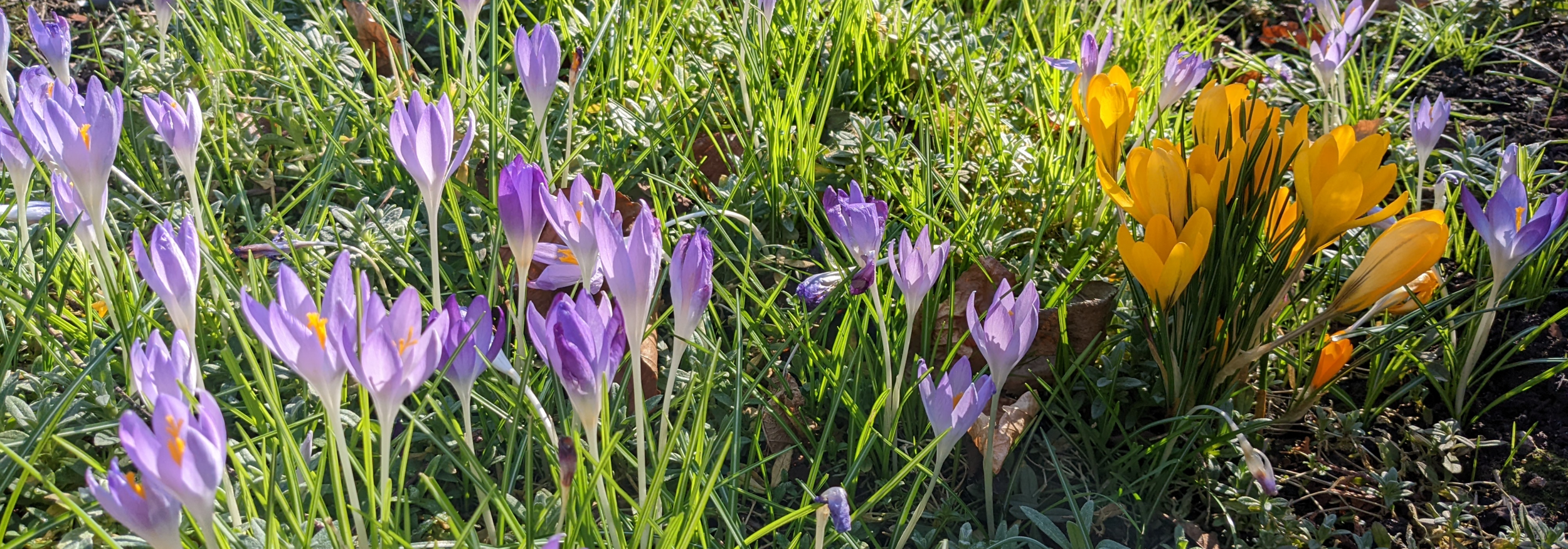Has winter ended?
/March is the month when spring really makes its presence known, bringing for me at least, a feeling that winter is done, though that was a somewhat premature fancy when the Beast from the East landed in 2018! At present, in mid-February, early spring flowers are certainly in evidence, snowdrops, cyclamen, primroses, and hellebores reappeared from the recent blanket of snow unscathed. The mahonias are all in bloom and fill the garden with scent, often enough to make me pause when some distance away and wonder what it is. Whilst not being much to look at and with the spiny leaves making them painful to prune, their fragrance makes it well worth finding a spot to grow at least one.
All winter, and especially during the recent mini Beast from the East, the birds have flocked to bird feeders and water bowl and a robin now waits on the kitchen window sill each morning if we have neglected to put meal worms out for it. Or I say one robin, as they all look the same (to us), it could well be a succession of them who sent out a message on their equivalent of social media. During the cold spell, a round of robins sat waiting their turn for the food. Normally they squabble rather viciously, but either the cold weather or the coming spring meant that they tolerated each other. I’m guessing the latter as it is coming into nesting season.
This brings me to an example of when the needs/wants of gardeners and environmentalists clash. Many birds will have chosen their nesting sites by now, and some will be in our garden hedges. The RSPB recommends that hedge trimmers should not be used between March and August, but this can be difficult with fast growing and unruly hedges. We have a lonicera nitida hedge that lines the drive, ideal for nesting birds but it sends out long shoots all summer. The effect will be familiar to those of us with lock down hair and it causes confusion for anyone with side sensors on their cars! It has been cut back this month and shears used if necessary, during the summer.
Above part of the hedge and drive stands a large, ancient, and beautiful pear tree which is stunning both in flower and as the leaves colour up in autumn. No-one knows what variety it is, the fruits are tiny and completely inedible; they drop all over the drive and when squashed by tyres, become a honey trap for wasps, making a walk to the post box rather hazardous.
This year the brambles and cow parsley have been cleared from below the tree’s canopy and the ivy covering most of the centre of the tree removed (there are plenty of other bramble patches and ivy scrambling up trees elsewhere, for wildlife), so now the snowdrops resident there can be appreciated. A selection of shade loving shrubs have been planted below the tree a little distance from the trunk and two bare rooted roses put in either side. It is coming to the end of the bare root planting season, but worth investigating if you are on a budget or planting en masse.
Time to make a coffee in my tin mug and disappear outside, in rather fewer layers than last week to enjoy the sun and ever changing garden.
Happy spring gardening!
All images. Author’s own.




